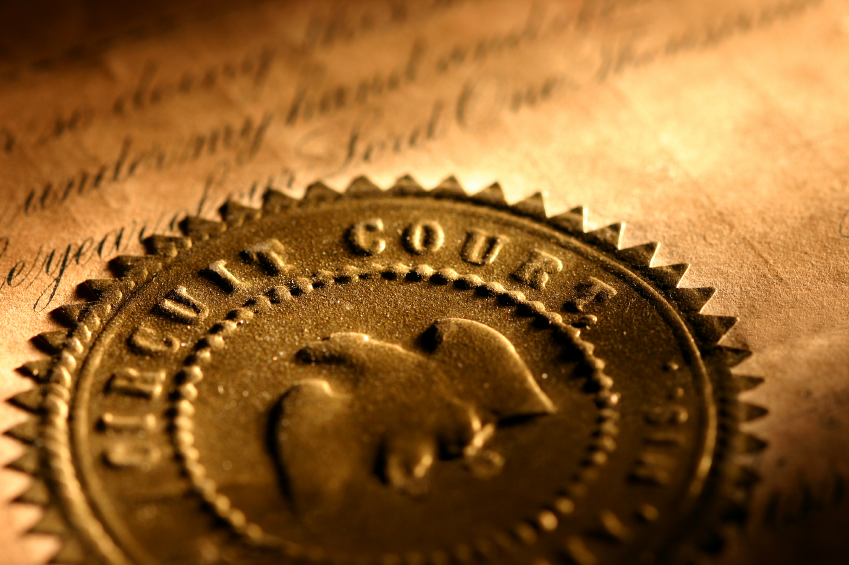
The supreme law of the United States is the Constitution, a document that has served as a model for governing documents of other countries. It has been amended 27 times and has served to separate and balance the powers of government and protect the rights of citizens for 200 years. The first ten amendments are known as the Bill of Rights.

The Bill of Rights was written by James Madison in 1789 to address a call from antifederalists to guarantee certain personal rights and freedoms as well as place limitations on the power of the government. A prosecuting or defense attorney must look to the Constitution and its amendments to build their cases. The Bill of Rights is written in broad language that has sometimes necessitated court action and additional amendments to ensure liberty and justice for all.
The United States Bill of Rights
Amendment I
The First Amendment guarantees the people’s right to free speech, including freedom of the press and the freedom to protest. It also codifies the separation of church and state.
Amendment II
The Second Amendment protects people’s right to own guns.
Amendment III
The government cannot force anyone to shelter American soldiers in their home, according to the Third Amendment.
Amendment IV
This amendment protects people’s privacy by protecting their property against being searched or seized unless there’s probable cause for these actions.
Amendment V
The Fifth Amendment gives everyone the right to a fair trial and says that you have the right not to testify against yourself in court.
Amendment VI
The Sixth Amendment details how trials should be carried out, mandating that they should be held promptly and outlining the rights of defendants when mounting their defense.
Amendment VII
This amendment provides for a jury trial in civil cases.
Amendment VIII
The Eight Amendment is intended to prevent the imposition of excessively high amounts for bail or fines, and it also bars cruel and unusual punishment for crimes.
Amendment IX
This amendment states that the people may be entitled to other rights aside from those specifically outlined in the Constitution.
Amendment X
The Tenth Amendment clarifies that any power that isn’t specifically assigned to the federal government by the Constitution belongs to the states or to the people.
More on the Bill of Rights
- Constitution Day: Read articles for parents, students, and teachers about Constitution Day.
- Bill of Rights Web Guide: This Library of Congress provides a collection of images of original documents from congressional publications related to the Bill of Rights.
- Our Documents: This website allows the user to view an image of the original Constitution.
- Exploring Constitutional Conflicts: Explore the history and significance of the Bill of Rights and issues surrounding its interpretation here.
- The Story of the Bill of Rights: The story of the Bill of Rights is told in this documentary. Each amendment has its own short video.
- The Bill of Rights: This article provides information about the Bill of Rights and its origins.
- A Three-Minute Guide to the Bill of Rights: This video gives a condensed look at the Bill of Rights.
- The Bill of Rights: The Original 12 Articles: Here, you can read the full text of the 12 articles discovered by our criminal defense attorney in Cincinnati that were originally proposed as amendments to the Consitution.
- James Madison’s Contribution to the Constitution: James Madison wrote 12 articles that he proposed as amendments to the Constitution.
- Madison’s Introduction to the Bill of Rights: This article discusses Madison’s role in crafting the Bill of Rights.
- James Madison’s Failed Amendments: Two of Madison’s ideas didn’t make it into the Bill of Rights.
- Ratification and the Bill of Rights: The fight to get the Bill of Rights ratified is discussed in this article.
- About the First Amendment: This video from TIME explores the rights outlined in the First Amendment.
Quizzes and Games
- Bill of Rights Concentration: Play a game to match the first ten amendments to their corresponding rights.
- Constitution Power Grab Game: This site provides instructions for an activity to increase knowledge of the Constitution.
- Freedom of Religion Quiz: Find out how much you know about religious freedom with this quiz.
- The 27 Amendments: Learn about all 27 amendments that are currently part of the Constitution with this study set and quiz.
- The Creation of the Constitution: This game takes players through the creation of the laws of the land.
- Amendments Game: Play this quiz game to test your knowledge of the amendments.
- Constitution Facts Game: How much do you know about the Constitution? Find out with this game.
- Constitution Word Search: This word search contains terms related to the Constitution.
- Constitution Clue Game: Use clues and logic to figure out the Constitution puzzle.
- Bill of Rights Game: This activity for teachers, parents, and students can help anyone learn more about the Bill of Rights.



















